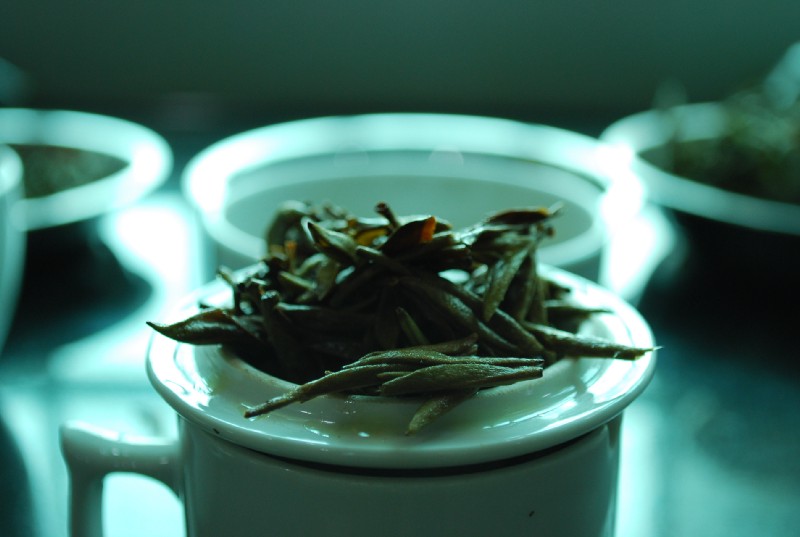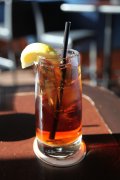How to write the tea evaluation? The correct brewing method of black tea cup and the diagram of the whole process
Drinking special tea is an adventure in taste, origin, aroma and so on. The best way to understand the complexity of high-quality tea is through cupping. Whether you are a caf é boss who wants to improve the menu, or a tea lover who wants to know more about your favorite drink, learning how to drink is a valuable experience. What is a cup test? Making tea is a method for industry experts to measure the quality of tea and determine the taste characteristics of tea. This helps them to ensure that the products meet the standards of consumer satisfaction, while also identifying the samples with the highest quality or the most unique taste. This process begins with the analysis of dry samples, followed by impregnation and sampling. Note many attributes, from the aroma to the body and tea structure. Making tea is not just a skill: it is also an art and science that helps to determine, set and maintain tea standards and ensure consumer satisfaction. This is an important stage in the production and sale of tea, because the quality and flavor of tea have changed greatly. Nathan stressed that, like coffee, the quality of a kind of tea varies from farm to farm, region and country.

Some tea parties are more fruity; others have more flowers. The most complex teas have subtle, complex nuances that are imperceptible by name alone. More importantly, the taste properties of tea will change with temperature and even time. The cupping process can help professionals draw this picture and give them an in-depth understanding of how the taste of the sample evolves and matures. This is an important stage in the production and sale of tea, because the quality and flavor of tea have changed greatly. Nathan stressed that, like coffee, the quality of a kind of tea varies from farm to farm, region and country. Some tea parties are more fruity; others have more flowers. The most complex teas have subtle, complex nuances that are imperceptible by name alone. More importantly, the taste properties of tea will change with temperature and even time. The cupping process can help professionals draw this picture and give them an in-depth understanding of how the taste of the sample evolves and matures. two。 When soaking to make tea samples, it is best to use pure oxygen water. Nathan stressed the importance of removing pollutants and minerals, while also introducing oxygen. This will ensure a clean taste, because even the freshest water contains minerals, which can affect the taste. It is recommended to directly pour 8 ounces / 227 ml of boiling water more than 2 grams of tea. He also warned against excessive immersion. Too much acid produced by excessive extraction can cause bitterness in the whole cup. Therefore, timing is crucial. It is worth remembering that consumers make tea at different temperatures and soaking times. In general, the darker the tea, the longer the soaking time, the higher the temperature. On the other hand, green tea and white tea are more delicate and need low temperature. But whatever your parameters are, Nathan told me the most important thing is to be consistent. This will make sure that what you taste is different, not what you brew. 3. Sensory evaluation now that your tea is ready, it's time for the most exciting part: sensory evaluation! First of all, we should pay attention to the color, depth and brightness of the tea. High-quality tea will give freshly brewed tea a rich and bold hue. Bright-rather than dull-is also often appreciated. On the other hand, withered leaves are often inconsistent, producing a weaker, lighter, more changeable flavor. If you look at the tea that has been soaked, you can understand the quality of your cup: high-quality tea tends to have soft leaves after soaking. Next, breathe the aroma of tea. What notes can you detect? Finally, it's time to taste it. Pay attention to your body and agility. Both words refer to taste, but they are slightly different. Nathan explained that lightness refers to the effect of the tea in your mouth and the aftertaste. A "lively" tea can be described as light; a lack of vitality may mean that the tea is stale. Agility and the body are desirable. What can you smell? The more tea you drink, the easier it is to recognize different notes. Remember to record your observations. There is no official tea list. However, if you drink a lot of tea and want to compare them, you can download an unofficial one or create your own. The world of tea is vast. From exquisite floral fragrance to lively and bold brewing, there are many flavors, origins and types of tea to explore. What better way to explore tea than cupping?
Important Notice :
前街咖啡 FrontStreet Coffee has moved to new addredd:
FrontStreet Coffee Address: 315,Donghua East Road,GuangZhou
Tel:020 38364473
- Prev

Iced black tea has floc in it. What is it? Ice black tea drink much what effect to have to the body?
Your tea is as good as your water. Maybe you are a consumer who wants to enjoy the subtle taste of Japanese matcha or Yunnan Pu 'er tea. Or you're a coffee shop owner looking to boost profits (tea is usually the most profitable of all menu items). No matter who you are, if you want your tea to have the best taste, aroma and clarity
- Next

Taste characteristics of taylors Earl Taylor Black Tea, the three High-end Black Tea Brands of British Royal Tea
With 130 years of experience in blending tea and a number of best-selling tea brands, Taylor Tea is one of the most respected tea and coffee companies in the UK. TaylorsofHarrogate headquarters in the UK set up Yorkshire Yorkshire in North England, and it is said that the water quality on their side is typical of the UK.
Related
- The milk tea cup becomes smaller?! Overlord Tea Girl launches a new "Return to Yunnan" series
- Accused of selling counterfeit and high-priced coffee beans! Well-known boutique coffee brand "Oukelao" bowed and apologized!
- How to make espresso dumplings? Can I eat coffee and glutinous rice balls together?
- Save the unformed and stagnant powder cakes in one second! What is the problem with stagnant water in the powder bowl of the espresso machine?
- What does hand-brewed coffee stop mean? Why is it not recommended to make coffee by hand?
- Is it normal to smell like coffee? Why does coffee smell like alcohol? What's wrong with the strong smell of cold extract ice dripping ice brewed coffee?
- How to solve the problem that hand-brewed coffee extraction takes too long? Why is the water flowing so slowly when making coffee?
- The main points of making Australian white coffee, the proportion details, how does Australian white properly foam and blend the flowers?
- Can ice water make cold extract coffee? What is the difference between room temperature water and ice water for making cold coffee?
- What milk is best for making latte and white Dirty coffee? What is the difference between different brands of fresh milk and pure milk for making coffee?

